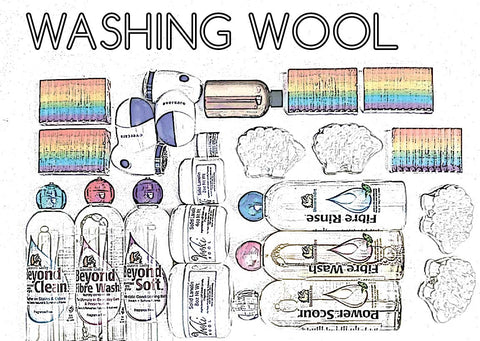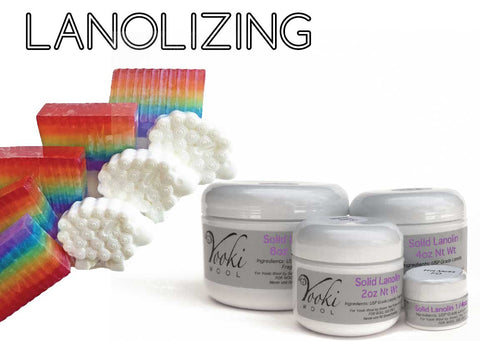Washing Your Wool Knits
Note: Shaving your wool- If you plan to move directly to lanolizing your wool after washing we recommend shaving the wool before you start the washing/lanolizing process. Heavy lanolin treatment can make it difficult to shave your wool and can cause build-up on the blades of your fabric shaver. It's generally only an issue immediately after lanolizing; wearing the woolies a few times works the surface lanolin into the knit making it easier to shave.
1. Fill your wash basin with tepid water between 86 and 95°F (35º C). If your wool is really dirty choose a warmer temperature in this range. Machine washable wool is generally safe to wash at temperatures up to 104º F (40º C). If you don't have a thermometer a good rule-of-thumb is to use water that feels like warm bath water.

2. Add your wool wash (use recommended amount). We recommend Unicorn Fibre Wash/Beyond Fibre Wash for maintenance washing and use 1 Tablespoon /gallon wash water (0.5 oz/gallon). For a deeper clean or to wash away old lanolin build-up use Unicorn's Power Scour or Unicorn Beyond Clean (0.5 oz/gallon).

3. Submerge your knitted wool until saturated with water

4. Soak for at least 15 minutes
5. Gently squeeze item and re-submerge to run some water through the fibers. Do not rub, scrub or create friction as this will cause felting. If you feel your item is clean at this point proceed to rinsing- step 7.

6. If you have stains or heavily soiled wool continue soaking again for 15 minutes or more. If your wash water is really dirty at this point you may want to replace it with clean wash water and continue to soak.
Note that slightly tinted water can be normal with colored woolies so a bit of color in the water does not always mean the water is dirty.
Stains may require some extra attention but do not rub/scrub stains or the wool will become felted in that area- tough stains can often be treated by gently pressing/pinching some soap into the stain and allowing it to sit before continuing to soak (beyond clean/power scour or lathered buncha farmers/fels naptha).
7. Gently squeeze the water out of your wool and set it aside.
8. Refill your basin with clean tepid water and submerge your wool. Gently squeeze the wool out a couple of times while the wool is submerged to get the clean water to run through the fibers.
If your rinse water is quite dirty or cloudy continue to replace the rinse water and repeat until it runs clear. Remember that some color/tint to the water may result from the colored/dyed wool and does not always indicate dirt.
Rinsing is the point where you can add a wool softener like Beyond Soft of Fibre Rinse: 1 teaspoon per gallon water works well and should be used in your last rinse if you are rinsing multiple times. If using a softener let the wool soak in the rinse water for 15 min.
9. After your wool is well-rinsed, squeeze as much excess water out of the wool as you can (without twisting or wringing it out which can result in stretching or damaging the knit).
10. Lay wool flat on a dry towel; roll up the towel; stand or push on the rolled towel to squeeze out as much excess water as possible. Standing on the towel roll is usually more effective. If the towel is really wet after this step I recommend repeating with a dry towel.
Alternative: put wool in your washing machine on a “spin only” cycle to remove excess water; keep the spin speed low/medium if possible. Do not wring/twist the water out of your wool; this may stretch or damage the wool fibers.

11. Lay flat to air dry.
For more information read the articles on felting facts and lanolizing




